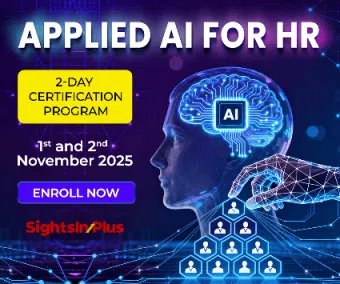HR has long been seen as the people function, but too often, HR professionals are buried in paperwork instead of focusing on people work. Employment contracts, onboarding forms, NDAs, exit letters, and compliance updates, when handled manually, take hours and create unnecessary friction in an age that demands agility. As organizations grow, so does the volume and complexity of their documentation, creating a mounting administrative burden.
The heart of this shift is digital contracts. Modern Contract Lifecycle Management (CLM) platforms and digital contracting tools are strategic assets redefining HR’s role within the enterprise. By automating contract workflows, centralising document storage, and offering real-time visibility, HR teams can pivot from paperwork to true people work and focus on what truly matters: creating an exceptional candidate experience.
The Hidden Costs of Manual HR Contracting
Traditional, manual contract processes often rely on siloed systems such as spreadsheets, local folders, email threads, and hard copies. This leads to errors in contract clauses, delays in issuing offer letters, missed compliance updates and a lack of clarity around contract expiration or renewal dates which can further lead to legal issues, candidate dissatisfaction, and reputational harm.
For instance, if a company stores employment agreements in physical files or scattered drives, a simple request for a salary clause or non-compete term can turn into a time-consuming search mission. Worse, failure to renew fixed-term contracts on time or include necessary legal provisions, like statutory wage disclosures or data privacy clauses, can result in litigation or regulatory penalties.
Digital Contracts: Streamlining the Employee Lifecycle
CLM platforms and digital contracts provide a practical, scalable solution that eliminates repetitive and manual administrative work. These tools provide end-to-end automation across the employee lifecycle, from offer generation to offboarding. It also allows contract templates to be standardised and stored centrally, ensuring consistency and legal accuracy, which also reduces hiring time.
For instance, onboarding becomes seamless when a single click can activate welcome emails, signing of NDAs, and policy acknowledgements. This speeds up the process and fosters a positive Day One experience reflecting organisational professionalism.
Similarly, with version control and integrated eSignatures, HR teams can avoid the confusion of multiple email attachments or outdated templates. Every stakeholder, from legal to compliance to team leads, can collaborate on a single, trackable source of truth.
Turning Data into Decisions
One of the biggest advantages of digital contracts is data insights. HR leaders can get real-time information about contract status, pending approvals, expiration dates, and renewal alerts. This information can help in workforce planning, prevent contract lapses, and optimise headcount forecasting.
For example, a centralised CLM dashboard can help identify contracts due for renegotiation, bottlenecks occurring in the approval cycle, and whether compliance updates have been acknowledged. This empowers HR leaders to be proactive instead of reactive, enabling them to be strategic partners rather than administrative trouble-shooters.
Keeping Up with the Law
Employment laws are constantly evolving, and staying compliant manually is a recipe for errors and last-minute policy overhauls. With automated compliance tracking and policy update alerts built into digital contract platforms, HR professionals can ensure that HR documents stay current with regional labour laws, tax regulations, and data privacy norms.
Whether it is changes to maternity benefits, probation clauses, or termination of notice periods, HR teams can apply policy updates across templates at scale, minimising human error and legal exposure.
Additionally, clear governance around contract ownership is easier to establish within digital systems. This transparency boosts accountability and ensures that no detail is overlooked during the employee lifecycle.
Cross-Collaboration
The HR team works in close collaboration with Legal, Finance, and Business teams in the contracting process. A unified platform help prevent miscommunication and delays.
Digital contracts support in-platform collaboration, allowing different departments to comment, track changes, and approve documents in real-time. This improves turnaround time by reducing dependency on email chains.
Moreover, these tools integrate with HRIS systems, payroll software, and identity management platforms, making it easier to ensure data consistency across the organisation. For example, once an offer letter is signed, employment details can move directly into payroll systems, eliminating manual data entry.
Unlocking Strategic HR
The ultimate benefit of digital contracting isn’t just operational efficiency but transformation. When administrative tasks are automated, HR leaders can focus on higher-impact initiatives such as diversity and inclusion, learning and development, employee well-being, and cultural transformation.
CLM reduces HR documentation costs by 65% and increases document accuracy by 90%, freeing up capacity for strategic projects.
Endnote
In a world where speed, accuracy, and compliance are table stakes, automated contracts are a fundamental enabler of modern HR. By embracing intelligent contract management solutions, HR teams can reduce risk, save time, and most importantly, refocus on their core mission of building better workplaces.
From paperwork to people work, the shift is already underway.
Note: We are also on WhatsApp, LinkedIn, Google News, and YouTube, to get the latest news updates. Subscribe to our Channels. WhatsApp– Click Here, Google News– Click Here, YouTube – Click Here, and LinkedIn– Click Here.



